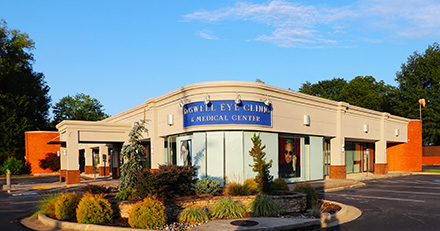Contact Lenses
Eye Exams for Contact Lenses
For many people, contact lenses provide greater convenience and more satisfying vision correction than eyeglasses. More people than ever before are now candidates for contact lenses because of new technology.
What to Expect During a Contact Lens Evaluation
Before a contact lens evaluation, a comprehensive eye exam is performed which determines your glasses prescription and checks for any eye-health problems. If everything looks good during your eye exam, the next step is a contact lens evaluation. The first step in a contact lens evaluation is consideration of your lifestyle, visual demands and your preferences regarding contact lenses, such as daily disposables or overnight wear.
Regardless of how often or how long you wear your contact lenses, your eyes should be examined at least once a year to make sure your eyes are continuing to tolerate wearing contact lens and show no signs warning signs of damage.
Contact Lens Measurements
Just as one shoe size doesn’t fit all feet, one contact lens size doesn’t fit all eyes. If the curvature of a contact lens is too flat or too steep for your eye’s, you may experience discomfort or even damage . Measurements will be taken to determine the best contact lens size and design for your eyes, these measurements include:
- Corneal curvature: An instrument called a keratometer is used to measure the curvature of your cornea, the clear front surface of your eye. This measurement helps your doctor select the best curve and diameter for your contact lenses. If your eye’s surface is found to be somewhat irregular because of astigmatism, you may require a special lens design known as a “toric” contact lens. At one time, only gas permeable (GP) contact lenses could correct for astigmatism, but there are now many brands of soft toric lenses available.
- In some cases, a detailed mapping of the surface of your cornea (called corneal topography) may be done. Corneal topography provides extremely precise details about surface characteristics of the cornea and creates a surface “map” of your eye.
- Pupil and iris size: The size of your pupil and iris (the colored part of your eye) can play an important role in determining the best contact lens design, especially if you are interested in GP contact lenses.
- Tear film evaluation: To be successful wearing contact lenses, you must have an adequate tear film to keep the lenses and your cornea sufficiently moist and hydrated. This test may be performed with a liquid dye placed on your eye so your tears can be seen with a slit lamp, or with a small paper strip placed under your lower lid to see how well your tears moisten the paper. If you have dry eyes, contact lenses may not be right for you. Also, the amount of tears you produce may determine which contact lens material will work best for you.
Trial Lenses
In many cases, trial lenses will be used to verify the contact lens selection. Lenses will be placed on your eye and your doctor will use the slit lamp to evaluate the position and movement of the lenses as you blink and look in different directions. You will also be asked how the lenses feel.
You’ll typically need to wear these trial lenses at least 15 minutes so that any initial excess tearing of the eye stops and your tear film stabilizes. If all looks good, you will be given instructions on how to care for your lenses and how long to wear them. You will also receive training on how to handle, apply and remove the lenses.
Follow-Up Visits Confirm the Fit and Safety
Your contact lens evaluation may involve follow-up visits. A dye (like the one used to evaluate your tear film) may be used to analyze the fit and confirm the lens is not causing damage or dryness. Even if your contact lenses are comfortable, the doctor may see warning signs before you are aware a problem.
Contact Lenses for Allergies and Dry Eye Syndrome
Allergies and Dry Eye Syndrome can make contact lenses uncomfortable and blurry. Sometimes changing to a one-day disposable soft lens will solve this problem, since you throw these lenses away at the end of the day before deposits can accumulate on the contact lens. Traditional GP and scleral contact lenses are also a good solution, as protein deposits don’t adhere as easily and the lens deposits are more easily removed.
Keratoconus and Specialty Lenses
Keratoconus is a relatively uncommon eye condition where the cornea becomes thinner and bulges forward. The term “keratoconus” comes from the Greek terms for cornea (“kerato”) and cone-shaped (“conus”). The exact cause of keratoconus remains unknown. Learn more about keratoconus and specialty lenses.
Conditions Treated with Contact Lenses
Presbyopia
When you reach 40 years old, the lens inside the eye gets stiff. In turn, you may notice the need to hold reading material, like your cell phone, farther from you to see it clearly. This condition is called “presbyopia.”
Multifocal Contact Lenses
Multifocal contact lenses, like progressive eyeglass lenses, have a range of powers for seeing clearly far away, up close and everywhere in between. Most people who try multifocal contact lenses are happy with them. However, it’s always a balancing act between up close and far away vision. Multifocal contact lenses are available in both soft and GP materials.
Mono-Vision Contact Lenses
For those who cannot wear multifocal contact lenses, another solution for presbyopia may be a monovision contact lenses. With monovision, you wear a contact lens on one eye for your distance vision and a contact lens on the other eye for your near vision.
Modified Mono-Vision Contact Lenses
In modified monovision, you wear a contact lens on one eye for your distance vision only and a multifocal contact lens on the other eye to help you see both far away and up close.
Astigmatism
Astigmatism usually causes vision to be blurred or distorted to some degree at all distances. Some of its symptoms are eye strain, headaches, squinting and eye irritation. Astigmatism is usually caused by an irregularly shaped cornea. Instead of the cornea having a symmetrically round shape like a basketball, it is shaped more like a football, with one meridian being significantly more curved than the meridian perpendicular to it.
Toric Contact Lenses
Toric contact lenses describe contact lenses that are designed to correct astigmatism. Toric lenses have different powers in different meridians of the lens to correct the varying amount of nearsightedness or farsightedness in different meridians of the eye that characterizes astigmatism. Toric lenses have a design feature that enables the lens to rotate to the proper orientation on the cornea (i.e. front surface of the eye) so the power meridians of the lens align with the appropriate meridians of the eye for clear vision. Since every eye with astigmatism is unique, it can take more than one pair of soft toric contact lenses to find the brand and design that provides the best fit, comfort and visual acuity. Also, fitting toric contact lenses for astigmatism takes more expertise than fitting regular soft lenses.
Myopia (Nearsightedness)
If you are nearsighted, you will have difficulty reading road signs and seeing distant objects clearly, but will be able to see well for close-up tasks such as reading and computer use. Other signs and symptoms of myopia include squinting, eye strain and headaches. Feeling fatigued when driving or playing sports.
Orthokeratology/Corneal Refractive Therapy (CRT)
Orthokeratology is a non-surgical procedure where you wear special gas permeable contact lenses (think of them as corneal molds) at night that reshape your cornea while you sleep. When you remove the lenses in the morning, your cornea temporarily retains the new shape, so you can see clearly during the day without glasses or contact lenses. Orthokeratology/Corneal Refractive Therapy (CRT) have been proven effective at not only correcting myopia but also slowing myopia progression. See Myopia Control.
Hyperopia (farsightedness)
People with hyperopia can see distant objects very well, but have difficulty focusing on objects that are up close. Farsighted people sometimes have headaches or eye strain and may squint or feel fatigued when performing work at close range.
Our Contact Lens Specialists: Dr. Emily Felouzis, Dr. Sarah Flanagan, Dr. Sharon Berger Moscow, Dr. Michelle Moscow, Dr. Scott Moscow, Dr. William “Billy” Moscow, Dr. Ashleigh Sprouse


